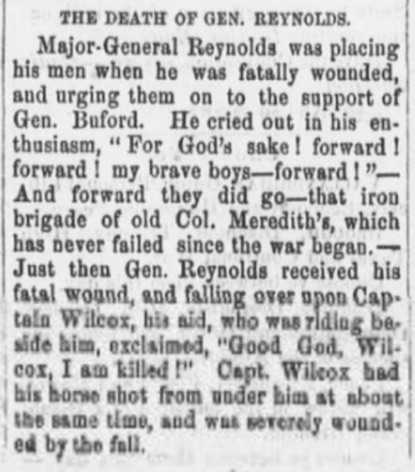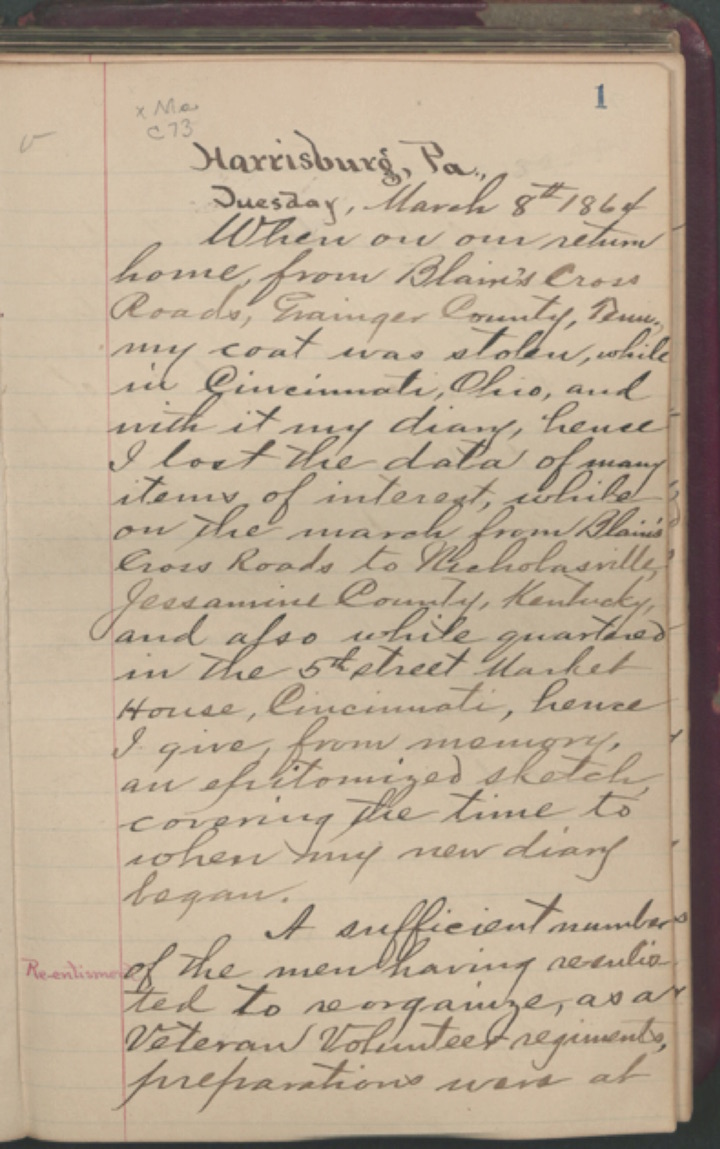‘Citizen Archivists’ and Civil War Documents

When I began my research on an Ohio African American Civil War regiment, the 27th United States Colored Troops (USCT), the only option I had if I wanted to read the soldier’s compiled military service records and pension files was to visit the National Archives and Records Administration in Washington, D.C. Although I loved the experience of holding the nineteenth-century documents in my hands while sitting in the Archival Research Room on Pennsylvania Avenue, those multiple trips over the years were an overwhelming financial burden for me as a graduate student and later adjunct professor.
And there were many trips.
Researchers are limited to four “pulls,” or individual files, six times a day (the numbers of which have changed since I began in 2001; the days and hours for the research room have also been cut). For regimental research, the time required to study the records of over 1,000 men can be daunting. Even after microfilm copies of the compiled military service records became available, which presented new problems of readability and access to microfilm machines if you could obtain copies of the microfilm rolls, the pension files remained available only at the National Archives.
This has changed drastically with the massive high-quality scanning projects that have made millions of Civil War military documents available online from the comfort of our own homes. Fold 3, a commercial website affiliated with Ancestry.com, includes the complete set of the compiled military service records for the 27th USCT, as well as almost every other black regiment. All other Union and Confederate troops have various levels of records scanned, from index cards to full compiled military service records. The site is in the process of scanning all widow pensions, with 11 percent completed, and offer a variety of other administrative military records. As of today, the site includes 91,045,934 Civil War records. It is absolutely amazing how much research can now be completed at little cost; and it is impossible to describe how much easier it is to decipher the documents when I enlarge them on my 24” monitor!

Of course we need more than the official military records to research the men, regiments, and communities that participated in the Civil War. Newspapers, letters, and diaries provide evidence of the lived experiences in the participants own words. We are fortunate to have access to multiple online sources for nineteenth-century newspapers, through subscription or free of charge, including the Library of Congress site, Chronicling America, and Ancestry.com just to name a few. And a Google search for “online Civil War diaries and letters” brings up over 2,300,000 hits. While the typed content of nineteenth-century newspapers is relatively easy to read, transcribing the scribbled, punctuation-starved, sometimes cross-hatched handwriting of the soldiers and their loved ones is a different story.

Fortunately, a growing number of organizations are working to increase our access to Civil War-era personal accounts and correspondence, as well as to additional official records. Through a growing number of crowdsourcing programs, or online forums that bring together a community of volunteers who collectively contribute to a defined project, people from around the world are helping to make some of the countless manuscript and archival materials held in repositories available online by transcribing valuable and interesting documents.
The impetus for many of these projects began on the eve of the Civil War sesquicentennial, with the goal of providing the general public with access to resources that had been previously limited to academic researchers or those known about only by the valuable archivists who protect our written records in local, state, and federal repositories. Unfortunately, budgets often fail to adequately provide for the multiple projects that museum professionals, archivists, and historians would like to do. The tools developed by early contributors to the digital history field, especially the Roy Rosenzweig Center for History and New Media, provided the solution for many of the groups who sought to share Civil War primary sources online where they could reach larger audiences.

Today there are several established online projects that provide a platform for “citizen archivists” to help transcribe these Civil War documents. Each site provides clear and simple instructions that allow participants to get right to work. Once completed, institutions place the transcriptions online for people who are curious or seek to become more informed, and for researchers who have limited time and financial means to visit archival repositories in person. Many stories have been written about the various projects and transcribers’ experiences, including this recent article published by the online version of The Christian Science Monitor—released while I was writing this post—“Wanted: Volunteers who like history . . . and can read cursive.”

If you would like to become a transcriber for one of these wonderful projects and help to expand our understanding of the experiences of Americans during the most pivotal time in our history, here is a list of some of the projects related to the Civil War era. And if you know of any others, will you please share in the comments section?
Smithsonian Digital Volunteers: Transcription Center The Smithsonian has multiple topics to choose from, but those specifically related to the Civil War era include the Douglass’ Monthly and North Carolina Assistant Commissioner, Letters Received.
National Archives: Citizen Archivist Dashboard A variety of manuscript collections selected from the holdings of the National Archives and Records Administration, examples from the Civil War include the case files for former Confederates seeking pardons and amnesty, approved pension files, and The Adjutant General’s Office, Letters Received.
The University of Iowa Libraries: DIY History – Civil War Diaries and Letters This project is almost complete with over 9,100 of 9,154 pages from over 90 manuscript collections transcribed.
African American Civil War Soldiers This project seeks to transcribe the soldier’s military service records held by the National Records and Administration and available on Fold3 to create a database of the almost 180,000 black men who served in the United States Colored Troops.
The Newberry: Transcribing Modern Manuscripts This project has several topics that include the Civil War era, including Family Life in the Midwest: Letters and Family Life in the Midwest: Diaries.
Mapping the Fourth of July: Exploring Independence Day in the Civil War Era This project includes speeches, newspaper articles, diaries, and letters from a variety of American citizens who lived throughout the country during the Civil War.
Digital Maine Transcription Project Search under “Browse by Tag” to see a number of Civil War documents by topic, regiments, and battles.
Kelly–thanks so much for this infirmative article. It will, I hope, go a long way toward getting readers and editors to understand just how important digital resources are to a writer/historian. So much more is now available to us, without those expensive and sometimes not-very-productive trips here and there. Granted, seeing Colonel Ellsworth’s gravesite in person cannot be compared in “feels” to seeing it on Find-A-Grave, (and it was totally worth it!), but for some purposes digital is not only sufficient, but can make all the difference.
Now a writer has choices, and if one is not sponsored by a university or a small personal fortune, that is very important. Again, thanks. LOL about the “reading cursive!”
Meg – I agree, there is nothing like the “real thing.” I remember the impact of reading Stephen Oates accounting of his visit to Southampton County when writing his book _The Fires of Jubilee: Nat Turner’s Fierce Rebellion_ and how Stephen Ambrose retraced the paths of Lewis and Clark for his Undaunted Courage: Meriwether Lewis, Thomas Jefferson, and the Opening of the American West_. I wanted to do that! And it is the same for letters and diaries – there is just something about holding them in your hands that makes you feel connected! But you are correct, not all of us can. These projects offer all of us a level of access never before possible.